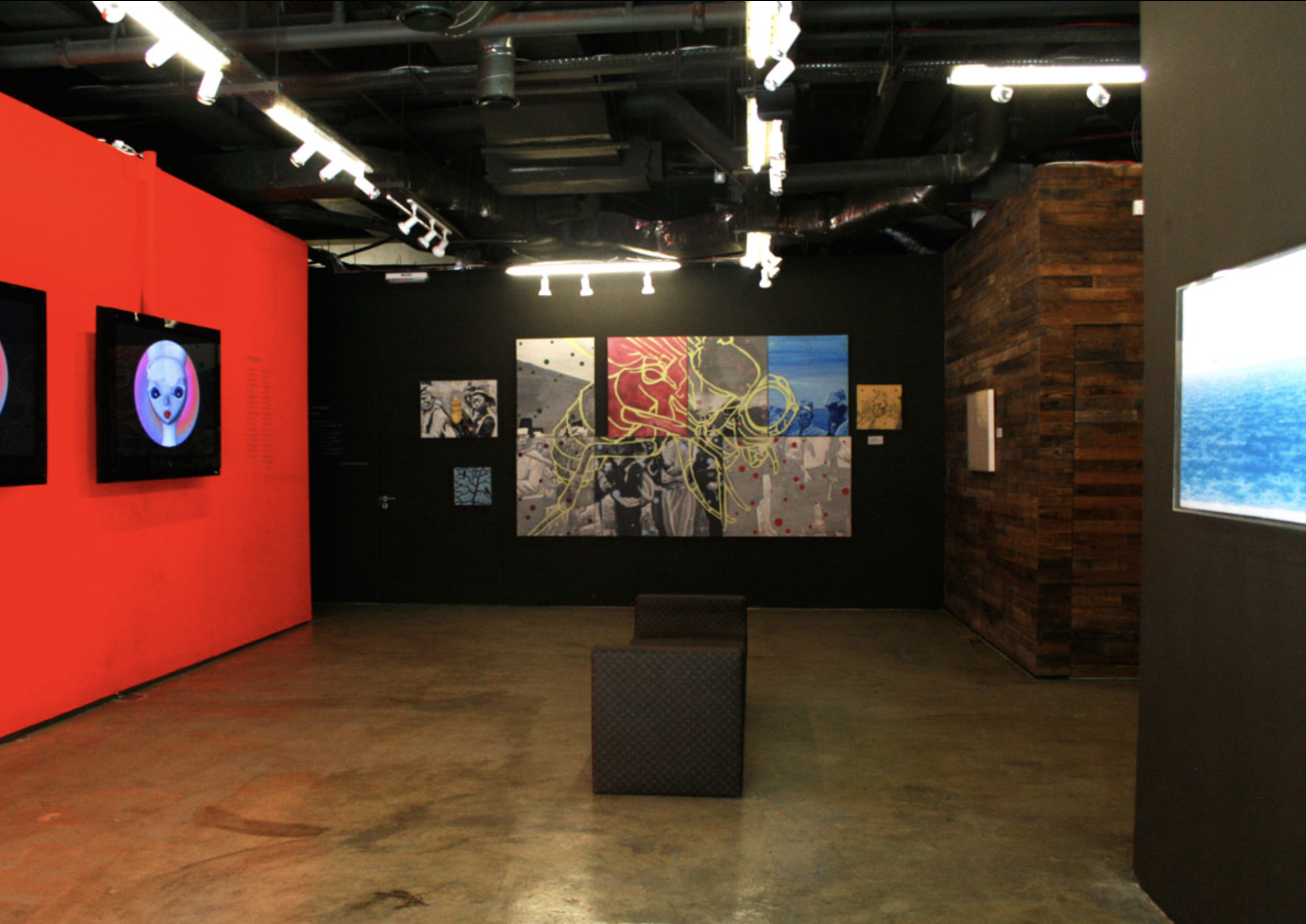Contemporary Korean Art: From the National Museum of Contemporary Art Korea
curated by Stephanie Seungmin Kim
Participating Artists:
An, Jung-ju/An, Se-kweon/Cha, Kyu-sun/Ha, Kwang-suk/Han, Ki-joo/Joo, Myung-duck/Jung, Boc-su/Kang, Ai-ran/Kim, Chang-young/Kim, Hae-min/Kim, Jin-ah/Kim, Jung-heun/Kim, Sang-gil/Kim, Sang-woo/Koh, Myung-keun/Koh, San-keum/ Koo, Sung-soo/Kwak, Duck-Jun/Lee, Hye-rim/Lee, In-hee/Lee, Jeong-lok/Lee, Ji-hyun/Lee, So-young/Lim, Sun-hee/Park, Chan-yong/Park, Heung-soon/Park, Hyung-jin/Park, Seo-bo/Park, So-young/Park, Young-gyun/Shin, Jin-sik /Shin, Moon-yong/Sohn, Jin-ah/Yoo, Seung-ho/Youn, Myeung-ro
<Contemporary Korean Art> marks the Korean Cultural Centre UK’s second exhibition since it’s opening in January 2008. As a platform for the promotion and development of the Republic of Korea’s unique visual and popular culture, and in keeping with the escalating international interest in Korean art, the exhibition aims to highlight the key movements, thematic concerns and stylistic explorations of Korea’s dynamic contemporary art scene.
The exhibition not only serves as an introduction to some of Korea’s most innovative and challenging artists through this diverse selection of 35 works from Korea’s National Museum of Contemporary Art, but also seeks to create a dialogue of cultural exchange, encouraging the viewers to question and interact with the works just as the works evolve and develop through these new and diverse perspectives.
The selection of works plays on the seemingly oppositional dynamic of Korea’s rich cultural heritage and its contemporary vibrancy, emphasising the intersections as well as tensions that shape these discourses. The exhibition is divided into three sections and shed light on the complex narratives that inform the visual tendencies of Korean art today. The first section is a collection of works whose visual or conceptual nature stems from the traditional influence of Eastern philosophy; the second section introduces works that fuse Western symbolism or visual forms with that a Korean aesthetic sensibility; and the last section provides a unique perspective of contemporary political and social issues, coloured by global and local events in today’s increasingly globalised world.
The first section, ‘Embedded in Eastern Philosophy’, outlines the traditional artistic influences that underlie much of Korea’s contemporary art. Through an emphasis on philosophical reflection and a meditation on process, form and graphic execution, artists like Seo-bo PARK draw on the almost ritual procedures of art-making to allude to a sense of unity and wholeness, a fusion of idea and material. His intricate print ‘Myobop’ (Ecriture) dramatises these notions and invites the viewer to become engrossed in the rhythmic and dense patterning of artistic action. Traditional technologies and an attention to craftsmanship are also seen in Kyu-sun CHA’s work ‘Landscape’, derived from traditional Buncheong ceramic techniques.
The question of cultural hybridity is addressed in the section ‘Western Symbolism Fused with Local Ideas’. The use of new artistic media such as video, installation and performance together with images and stylistic tendencies of Western artistic visual forms, are integrated with Korean cultural concerns. Kwang-suk HA’s work ‘Pond’ references the Christian symbolism of fish, projected onto the floor of the exhibition space itself, while simultaneously alluding to Eastern painterly tradition and one of its most common motifs in artistic representation. The changing landscape of the modern Korean metropolis is the subject of Sun-hee LIM(b.1975)’s work ‘Wonder-I’, suggestive of the persuasiveness of mass media and advertising and the unstoppable processes of technology and modernisation. Hye-rim LEE’s femme-bot ‘Lash’ draws on stereotypical notions of Asian beauty and deals with the mechanical proliferation of these images in mass culture.
The last section, ‘Inspired by the Ideology and Politics of Korea Today’, addresses the weighty subject matter of Korea’s history and its place in the world today. With works that deal with topics ranging from the Imperialistic Japanese occupation, the division of North and South Korea and the dictatorship of military governments, this section give voice to the commonality of people seeking historical truth. The artists use allegory and irony towards questioning globalisation, capitalism and geo-political realities. Duk-Jun KWAK super-imposes his own face onto images of American presidential candidates, whereas
Jung-ju AN’s intriguing video of Pakistani paramilitary troopers with their Indian counterparts de-localises the North and South Korean divide, drawing attention the pervasiveness of these discords in many parts of the world.
The exhibition thus paints a portrait of contemporary Korean life, with its numerous complexities, subtleties and the processes of personal identity and cultural questioning that are necessary to change and progress. The dynamism and diversity of these works attests to the ways in which artists explore their position between tradition and modernity in a fast developing society and an ever changing world.
The Exhibition will launch with a reception on the evening of 26 March 2008, with the preview of a 7 weeks-long exhibition
